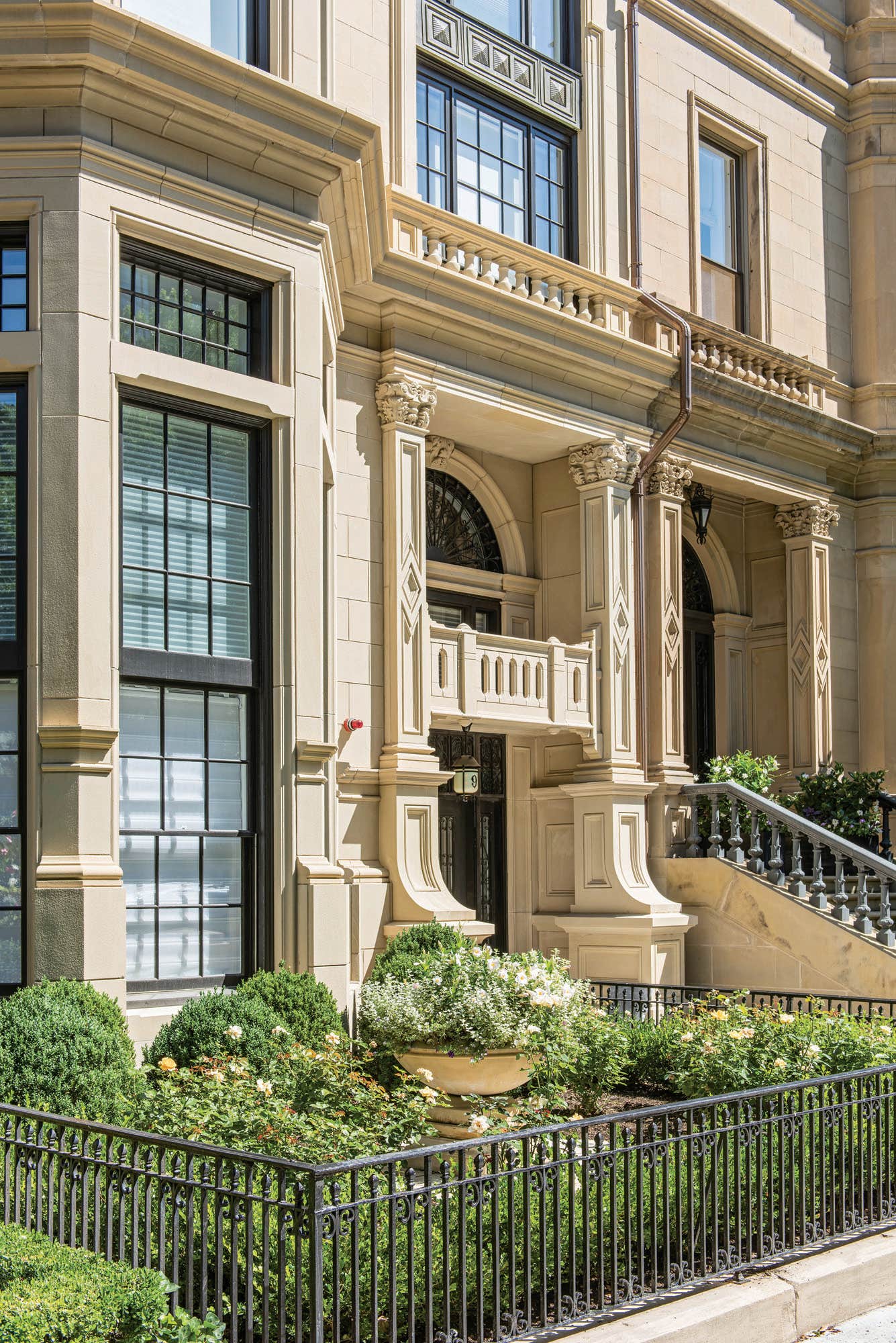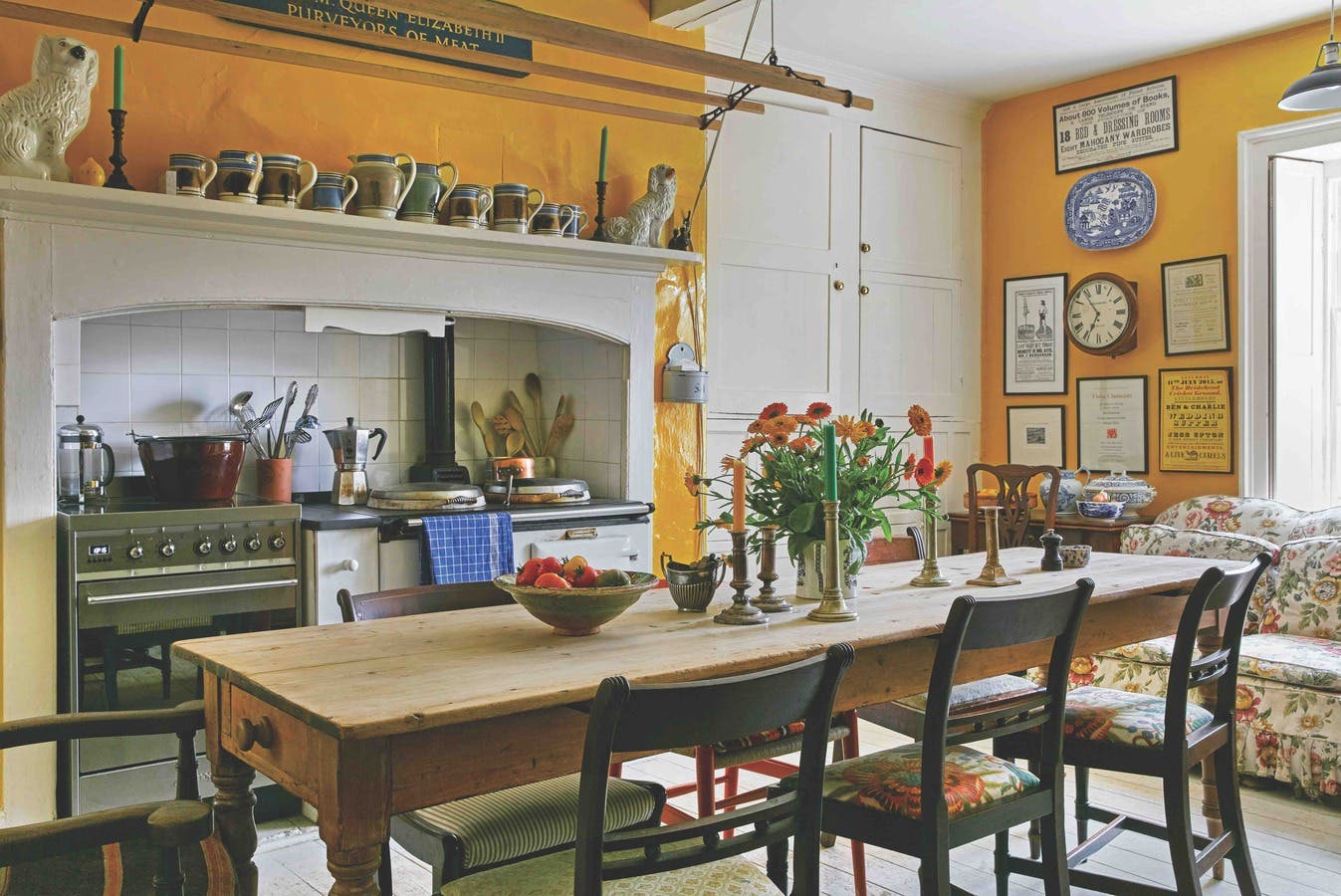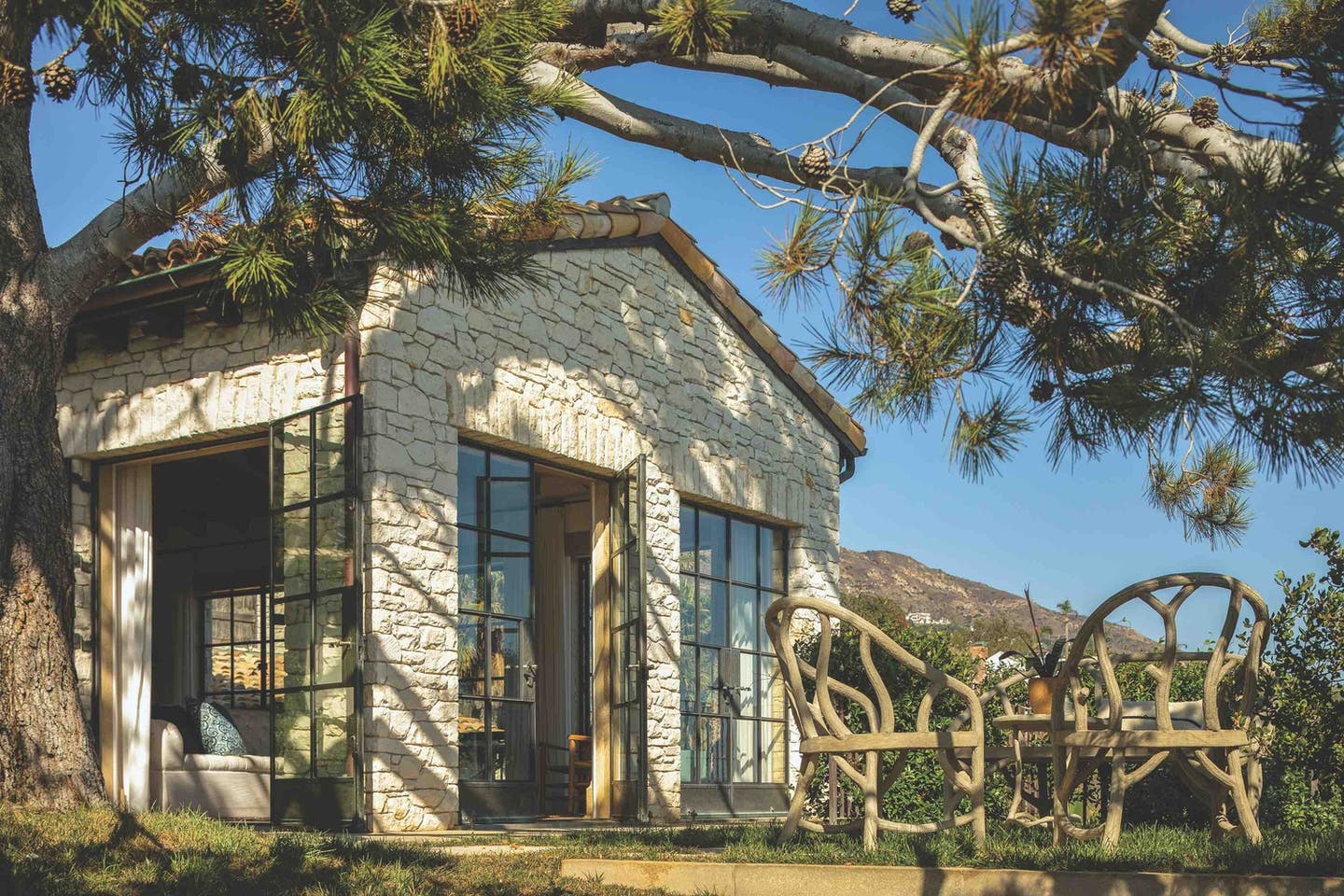
Restoration & Renovation
Back Bay Townhouse Revived by Meyer & Meyer
Photography by Peter Vanderwarker
The exterior of a seven-story 13-unit townhouse on Commonwealth Avenue, in Boston’s historic Back Bay area, touted as one of the most unspoiled areas of 19th-century American urban design, had seen better days. The townhouse, built in 1861, was originally designed as the symmetrical twin of its neighbor, each with a bay extending through the mansard roof.
In 1870, the townhouse was sold to an importer and crockery dealer and former Mayor of Boston Otis Norcross; it remained in the Norcross family until 1937, when it was sold to a realty company. Originally built as a single-family home, the new owners eliminated the entry and stairs to create room for two additional floors, forming a total of 13 units. All Nova Scotia limestone on the façade, which is now extinct, was interchanged with marginally detailed brick, stone, and precast concrete. The cornice lines and mansard roof were removed, and with its new under-scaled entry, unusual window proportions and mediocre materials, the building was rendered uncharacteristic of the Back Bay neighborhood.
Hoping to recapture the essence of the original building, its owner reached out for help.
Principal Interior Designer of Meyer & Meyer, Inc. Architecture and Interiors Laura Brooks Meyer, says “Our firm welcomed the opportunity to show that the exterior of the Back Bay townhouse could be redesigned to sit appropriately among its historic neighbors while a gut renovation resulted in modern condominiums within.” The firm, which had been carefully selected for the project, had the full backing of the City of Boston Historic Commission.
“The challenge was keeping the additional floor the developer added years ago and designing an exterior that balanced the new exterior with the sister building. Because the floor-to-floor heights were reduced by crowding additional stories into the structure whose overall height remained primarily the same, there was a significant challenge because the later floor plates had to be retained in order to keep the project economically viable,” notes John Meyer.
To help disguise the misalignment of two additional floors, new windows were clustered to elongate their proportions. Using strategically placed enriched cornice lines, belt courses, and stone coursing, the horizontal banding of the two buildings was reconstructed. The top floors look more continuous now that the true mansard style—with scalloped slate and capped matching metalwork and crested wrought iron railing—has been revitalized.
Extensive improvements to the front façade now evoke the grandeur of the initial building, and Meyer & Meyer focused the new features to be indicative of the French Academic style. “As of result of the current renovation, the number of units was decreased from 13 to 6, and the redesign of the exterior restored the building’s symmetry by extending belt courses across the elevation and replicating other masonry details including balustrades and carved limestone panels,” says John Meyer.
A newly designed, elegant two-story entry is equipped with all the bells and whistles it should behold—ornamental detailing, two pilasters flanking the entry, all allowing the above balustrade to reconnect with its sister building. A shallow porch now safeguards the newly recessed vestibule.
The elevator head house was reduced in height and set back from the street view. A new driveway ramp with a covered entry at the rear provides access to underground parking for six cars. Two additional parking spots remained on-grade at the rear of the building. Limestone veneer now replaces the brick and stone cladding.
Meyer & Meyer designed a new rooftop deck for the penthouse unit, in addition to a private terrace along Commonwealth Avenue. Construction cost for the project stayed within the developer’s budget and took just under a year to complete.
“It gives us great satisfaction to know that the original historic aesthetic can be maintained while all new systems and interiors will benefit the owners for years to come,” says Laura Brooks Meyer.








